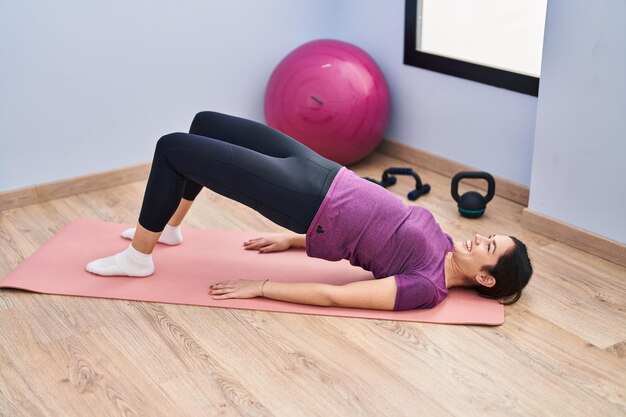
Pelvic floor exercises, commonly referred to as Kegel exercises, target your pelvic muscles, which support key organs like the bladder, bowel, and uterus. Over time, these muscles naturally weaken, which can lead to various health issues for both men and women. By practicing specific exercises, you can tone and strengthen these muscles, boosting their function and addressing or even preventing health problems.
For women, pregnancy and childbirth can strain and weaken pelvic muscles. For men, prostate surgery can affect these muscles, increasing the risk of issues like rectal prolapse. Establishing a routine of these targeted exercises can help minimize or prevent such complications. Benefits include improved bladder and bowel control, reduced chances of vaginal prolapse, better postpartum recovery, and enhanced recovery post-prostate surgery. These exercises even improve sexual health by increasing sensation and comfort, while reducing pelvic pain during intimacy. Dedicating just five minutes daily to pelvic floor exercises can make a significant difference.
When these muscles tighten, organs like the bladder, bowel, and uterus are lifted, while openings such as the urethra, anus, and vagina contract. When relaxed, these openings release urine or feces. Pelvic floor muscles can be negatively affected by factors such as aging, obesity, chronic coughing, pregnancy, childbirth, or heavy lifting. Weak muscles can result in incontinence, wind leakage, or painful intercourse. Identifying and engaging the correct muscles is essential for effective results, especially if you’ve recently undergone surgery or childbirth. Consultation with a doctor is recommended in such cases to ensure safe practice.
### Identifying Your Pelvic Floor Muscles
Finding the right muscles to focus on is a critical first step. Here are some easy ways to locate them:
– **During urination:** Try stopping the flow midstream. The muscles you use to do this are your pelvic floor muscles.
– **When holding in gas:** If you tighten to hold back wind, that’s your pelvic floor activating.
– **Squeezing sensation:** Contracting these muscles should produce an upward lift, helping you identify them.
Avoid engaging your legs, stomach, or buttocks during these movements to ensure you’re isolating the right area.
### How to Practice Pelvic Floor Exercises
Pelvic floor exercises are simple and can be performed sitting, standing, or lying down. Here’s how to do them:
1. **Initial Position:** Relax your shoulders, thighs, abdomen, and glutes. This is your starting posture.
2. **Squeeze:** Tighten the ring of muscles around your front and back passages.
3. **Hold:** Maintain the squeeze for a few seconds. As you gain strength and comfort, increase the duration.
4. **Repeat:** Perform 10 slow squeezes followed by 10 quick squeezes. Complete 3 sets twice a day.
Avoid over-tightening or holding the squeeze too long. Consistency over intensity yields the best results.
### Effective Pelvic Floor Exercises
Here are some popular and easy exercises to further target pelvic floor muscles:
#### 1. **Bridge**
The bridge primarily works your glutes but also activates your pelvic muscles.
– **How to do it:** Lie flat on your back with knees bent at 90 degrees and feet flat on the floor. Squeeze your glutes and lift your hips to form a straight line from shoulders to knees. Hold for a second, lower, and repeat.
– **Reps:** 10–15 reps for 2–3 sets.
#### 2. **Squats**
Squats are excellent for engaging the glutes, hamstrings, and pelvic muscles.
– **How to do it:** Stand with feet slightly wider than hip-width apart. Bend your knees and push your hips back, as if sitting in a chair. Return to standing.
– **Reps:** Complete 15 reps.
#### 3. **Bird Dog**
This full-body exercise improves stability while working the pelvic floor.
– **How to do it:** Start on all fours, extending one arm and the opposite leg simultaneously. Hold for a few seconds, return to the starting position, and alternate sides.
– **Reps:** 10 reps per side for 3 sets.
#### 4. **Split Tabletop**
This Pilates-inspired move activates the pelvic floor and inner thighs.
– **How to do it:** Lie on your back with knees bent at a 90-degree angle and legs together. Slowly let your knees fall outward in a controlled motion, then bring them back to the starting position.
– **Reps:** 10–15 reps for 3 sets.
#### 5. **Pelvic Lift**
This strengthens the pelvic floor, glutes, and lower back.
– **How to do it:** Sit on a mat and extend your legs. Place your hands behind you for support, then lift your hips, clenching your pelvic muscles. Hold for 10 seconds, then lower back down.
– **Reps:** 10–15 reps.
### Benefits of Pelvic Floor Exercises
Adding pelvic floor exercises to your routine results in multiple physical and emotional benefits:
1. **Better Bladder and Bowel Control:** Improves comfort and prevents embarrassing leaks.
2. **Prevents Prolapse:** Keeps pelvic organs like the bladder and uterus in their correct position.
3. **Supports Pregnancy:** Strengthens muscles to better handle the weight of a growing baby.
4. **Post-Childbirth Recovery:** Speeds recovery, improves bladder control, and reduces issues like urine leakage.
5. **Post-Prostate Surgery Recovery:** Helps men regain muscle tone and bladder control.
6. **Enhanced Confidence:** Prevents leaks during activities like laughing or coughing, boosting self-assurance in public.
7. **Improves Sexual Function:** Increases sensitivity and reduces pelvic pain during intercourse. For men, it can also help with erectile dysfunction.
### Possible Side Effects
Doing these exercises incorrectly—focusing on the wrong muscles, overdoing them, or not practicing with proper technique—can lead to problems like back pain, urinary incontinence, or even a weaker pelvic floor. It’s always a good idea to consult a healthcare professional before starting, especially if you’re recovering from surgery or childbirth.
Incorporating pelvic floor exercises into your daily routine can improve not only the strength and health of pelvic components but also the overall quality of life. Start slow and, if needed, seek guidance from a professional to ensure you’re positioning and activating the right muscles.